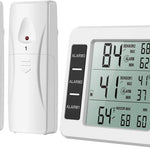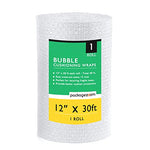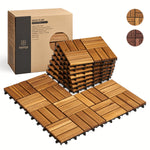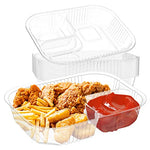You have no items in your shopping cart.
The Convenience of Microwaving with Ziploc Bags
Microwaving food is a staple of modern convenience, and Ziploc bags are often seen as a quick way to heat or reheat food. However, whether it's safe to use Ziploc bags in the microwave depends on several factors. This article explores the safety of microwaving Ziploc bags, offering guidelines and alternatives for safe food reheating.
Understanding Ziploc Bags
Materials Used in Ziploc Bags
Ziploc bags are typically made from polyethylene, which is generally considered safe for contact with food. Some varieties may also include a layer of polypropylene to enhance durability.
Manufacturer Guidelines for Microwaving
According to the manufacturer, most Ziploc bags are microwave-safe. They recommend using them at a medium heat setting and leaving the bag partially open to allow steam to escape.
The Science Behind Microwaving Plastics
How Microwave Heat Affects Plastics
Microwaves heat food by causing water molecules to vibrate, generating heat. When plastic is microwaved, especially if it's tightly sealed, steam can build up, potentially causing the bag to rupture.
Chemicals in Plastics: Safety Concerns
There is ongoing debate about chemicals like BPA and phthalates in plastics. However, Ziploc has stated that their products are BPA and dioxin-free, addressing some of the main concerns about heating food in plastic.
Safe Practices for Microwaving Food in Ziploc Bags
Always Follow Manufacturer Instructions
Use the microwave settings recommended by the bag’s manufacturer to avoid overheating, which can degrade the plastic.
Vent the Bag to Release Steam
To prevent steam buildup and potential bag rupture, ensure the bag is vented by leaving an opening.
Avoid High-Fat or High-Sugar Foods
Foods with high fat or sugar content can reach temperatures above those typical of boiling water, potentially melting the plastic. Avoid microwaving such foods in Ziploc bags.
Do Not Reuse Ziploc Bags for Microwaving
Reusing plastic bags can weaken their structure and increase the risk of leaching chemicals into food. Always use a fresh bag for best safety practices.
Alternatives to Microwaving Food in Ziploc Bags
Glass Containers
Using microwave-safe glass containers is a safer alternative for heating food as they don’t pose a risk of releasing chemicals when heated.
Microwave-Safe Plastic Containers
If you prefer using plastic, opt for containers specifically labeled as microwave-safe as these are designed to withstand microwave temperatures without melting or leaching chemicals.
Health and Environmental Considerations
Health Impacts of Microwaving Plastics
While the risk is low with bags like Ziploc, some experts still recommend limiting the use of plastics in the microwave as a precautionary measure to avoid potential exposure to chemicals.
Environmental Impact of Disposable Plastics
Consider the environmental impact of disposable plastics and explore reusable options that can reduce waste and exposure to plastics.
Ziploc Bags and Microwave FAQs
Is it safe to boil food in Ziploc bags?
It's not recommended to boil food in Ziploc bags, as boiling can reach temperatures that might exceed the melting point of the plastic.
Can you defrost food in a Ziploc bag in the microwave?
Yes, you can use Ziploc bags to defrost food in the microwave. Make sure to open the bag to vent and use a low-power setting.
How do you know if a plastic container is microwave-safe?
Look for the microwave-safe symbol, a microwave with some wavy lines on it, usually found on the bottom of the container.
What are the signs that a plastic bag is not microwave-safe?
If the bag melts, deforms, or gives off a plastic smell when heated, it is not suitable for microwave use.
Best Practices for Using Ziploc Bags in the Microwave
While Ziploc bags are designed to be microwave-safe, using them requires careful handling to ensure food safety. By following the manufacturer's guidelines and considering alternatives, you can use Ziploc bags in the microwave effectively and safely. Embracing these practices will help maintain the quality and safety of your food, while also considering your health and the environment.








